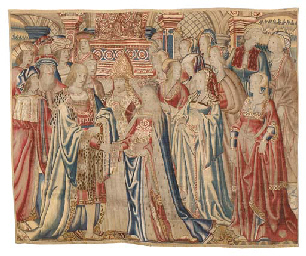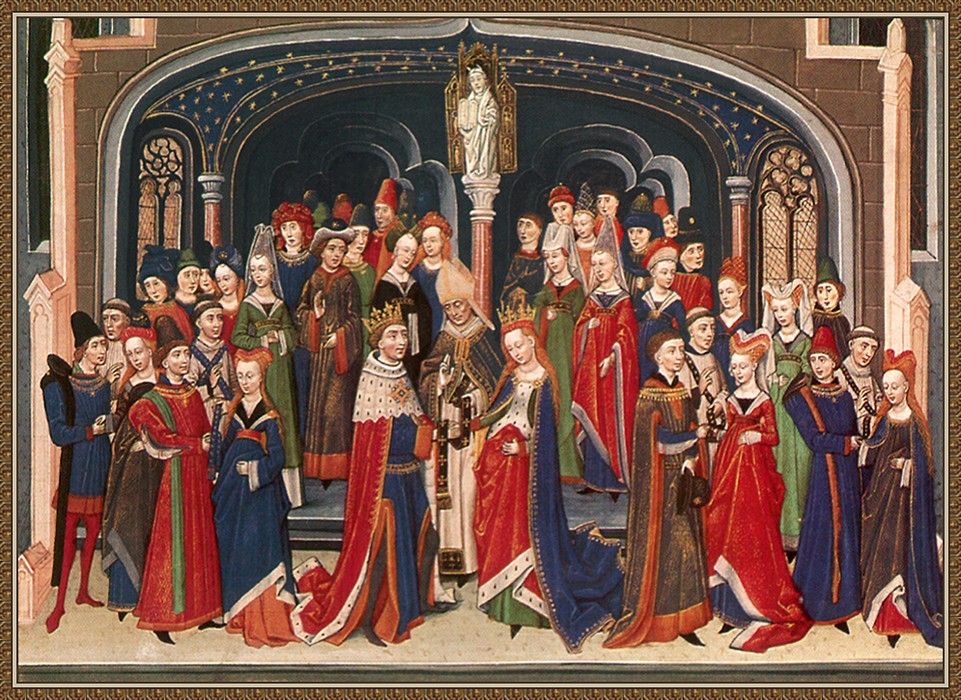Marriage
Introduction
Chapter 4 : The Marriage Ceremony
Despite the Church clearly advocating that matrimony was based on consent, marriages that were not conducted by a priest were frowned upon, and referred to as clandestine, rather than “regular”. By the late fifteenth century, anyone who wanted an indisputable marriage was likely to conform to the norm and be married by a priest.

Marriage usually took place in three stages. The first was an agreement in principle between the families that their offspring should marry, followed by vigorous negotiations about the financial settlement. Once all was concluded, the pair agreed to marry in the future, but did not consummate the match. This was the betrothal, or in Northern English and Scots, the “handfasting”, as the couple joined or shook hands to signify agreement.
The banns (a formal announcement in the parish of each partner that a marriage was planned) were then published and read. The banns were read three times, usually weekly, during which time it was expected that any bar to marriage, such as consanguinity or a previous betrothal, would be identified.
If no impediment were discovered, the pair were married by a priest “in the face of the Church”. The wedding usually took place in the Church porch, and was followed by the nuptial mass. Consummation followed, and the couple were then indissolubly linked until death.

